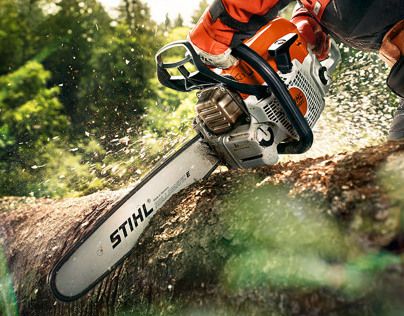Choosing the right chainsaw size is one of the most critical decisions you’ll make when purchasing this powerful tool. The “size” of a chainsaw primarily refers to its guide bar length, but it’s also intrinsically linked to the power of its engine or motor. Selecting the appropriate size ensures not only efficient and effective cutting but, more importantly, enhances safety and reduces user fatigue. Opting for a saw that’s too small will lead to frustration and inefficiency, while a saw that’s too large can be unwieldy and dangerous for the tasks at hand.
1. Understanding Chainsaw Sizing: Bar Length and Power
The most common way to refer to chainsaw size is by its guide bar length, which is the exposed length of the bar that the chain runs around. This dictates the maximum diameter of wood you can cut in a single pass. However, bar length must be matched with adequate power (engine displacement in cubic centimeters (CC) for gas saws, or voltage/amp-hours for electric/battery saws). A long bar on an underpowered saw will perform poorly.
2. Match the Chainsaw to Your Typical Tasks
Your primary use cases should dictate the ideal size.
- Small Jobs: Pruning, Limbing Small Branches, Kindling (6-12 inch bar)
- Tasks: Trimming small branches (up to 4-6 inches in diameter), cutting kindling, light brush clearing, or processing very small logs.
- Power Source: Often electric (corded) or smaller battery-powered models (e.g., 20V-40V). Some very compact gas models exist.
- Why this size: Lightweight, highly maneuverable, and easy to control for precision cuts. Reduces fatigue for overhead work or extended light tasks.
- Considerations: Limited cutting depth; not suitable for felling anything beyond very small saplings.
- Medium Jobs: Firewood, Small Tree Felling, Larger Limbing (14-18 inch bar)
- Tasks: Cutting firewood logs (up to 12-14 inches in diameter), felling small to medium-sized trees (up to 10-14 inches), and heavier limbing. This is the most versatile range for most homeowners.
- Power Source: Mid-range gas chainsaws (40cc-50cc) or powerful battery-powered models (e.g., 60V-80V).
- Why this size: Offers a good balance of power and maneuverability. Can handle a wide variety of common yard tasks efficiently.
- Considerations: Gas models require more maintenance; battery models may require multiple batteries for extended work.
- Large Jobs: Large Tree Felling, Extensive Firewood (20+ inch bar)
- Tasks: Felling large trees (over 16-18 inches in diameter), processing very thick logs, or extensive, continuous firewood cutting.
- Power Source: Primarily powerful gasoline chainsaws (50cc and above). Some very high-end battery models are now approaching this capability.
- Why this size: Provides the necessary power and reach for substantial cutting tasks.
- Considerations: Heavier, more challenging to control, and require significant experience to operate safely. Not suitable for small, intricate tasks.
3. The “Rule of Thumb” for Bar Length
A general guideline for safe and efficient cutting is that your guide bar should be at least 2 inches longer than the diameter of the wood you intend to cut in a single pass. For example, to cut through a 12-inch diameter log in one pass, you’d need at least a 14-inch bar. Never attempt to cut wood that is thicker than the effective cutting length of your bar, as this significantly increases the risk of kickback.
4. Consider Your Experience Level
- Beginners: Start with smaller, lighter chainsaws (12-16 inch bar, electric or smaller battery models). These are easier to handle and less intimidating, allowing you to develop proper technique and confidence.
- Experienced Users: Can comfortably handle larger, more powerful saws, but should still match the saw size to the task at hand for optimal safety and efficiency.
5. Prioritize Safety Features
Regardless of size, always ensure your chainsaw has essential safety features: a functional chain brake, anti-vibration system, chain catcher, throttle lockout, and low kickback chain/bar.
Conclusion
Choosing the right chainsaw size boils down to a realistic assessment of your typical cutting tasks and your experience level. For most homeowners, a versatile 14-18 inch bar on a mid-range gas or powerful battery-powered chainsaw will cover the majority of needs. By selecting a chainsaw that’s appropriately sized for your work, you’ll ensure a safer, more efficient, and more enjoyable cutting experience.

